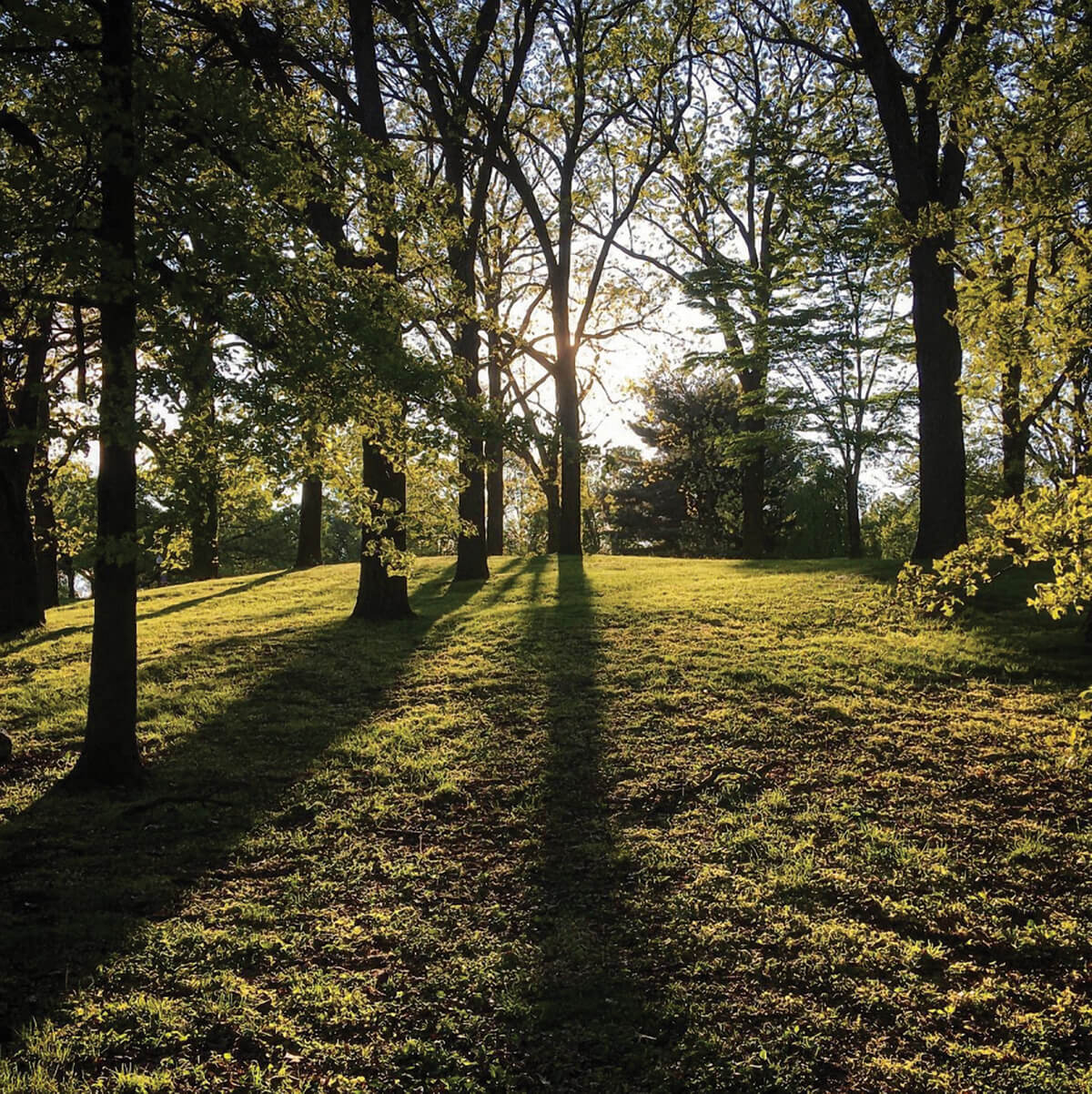History & Politics
Druid Hill Park’s Grove of Remembrance Was Planted by Mothers Who Lost Sons in World War I
For decades, the grove hosted events on Mother’s Day, which already had an anti-war origin story when the modern holiday was first celebrated in 1907.

The trees were little saplings then. Now, tall and strong, they make up the quiet grove where Baltimoreans will gather at 3 o’clock this afternoon, as they have gathered on every Mother’s Day since 1920, to pay tribute to the living and dead of the nation’s war.”
—Mrs. Henry F. Baker, Baltimore Sun, May 8, 1955
Nestled on a hilltop in Druid Hill Park, the Grove of Remembrance, whose century-old pin oak trees now stretch 70 feet, was planted by Gold Star Mothers who had lost sons in World War I.
Dedicated less than a year after the armistice, it was a poignant tribute: One sapling was put into the earth for each of the 48 states then in the Union, another for the city of Baltimore, another to represent our allies, and one to honor wartime president (and Johns Hopkins University graduate) Woodrow Wilson. More than 62,000 Marylanders, the bulk from Baltimore, joined in The War to End All Wars. Nearly 11,000 African Americans from the state served. More than 1,700 Marylanders lost their lives.
Twenty-three-year-old Highlandtown bank clerk Henry Gunther of the 313th Infantry Regiment—nicknamed “Baltimore’s Own”—was the last American soldier killed. Just outside a French village, the grandson of German immigrants made a tragic charge one minute before the armistice famously took effect on the 11th hour of the 11th day of the 11th month of 1918. (A VFW Post in his neighborhood was later named in his honor.)
The original ceremony, not far from the Maryland Zoo, was attended by Mayor William Broening, Cardinal James Gibbons, Rabbi Morris Lazaron, Governor Emerson Harrington, and the French ambassador. Some 1,000 schoolchildren, each carrying an American flag, led the parade into the park, followed by 20 war mothers, a detachment of Maryland veterans, a group of Red Cross workers—all Maryland women—and wounded men “whose serious faces bespoke remembrance of comrades” buried near overseas battle lines.
It was the country’s first memorial of its kind and is believed to be the oldest living memorial in the U.S. Subsequently, trees were planted to memorialize World War II, Korean, and Vietnam War veterans.
Two stone markers along Beechwood Drive point the way to the footpath entrance to the largely forgotten grove, which seems to be visited by more deer than people these days. A pair of bronze plaques highlight the location of each state’s tree, planted 25 feet apart from one another, providing ample room for growth and space for reflection.
For decades, as Mrs. Baker noted in her short essay, titled “I Remember,” the Grove of Remembrance hosted events on Mother’s Day, which already had an anti-war origin story when the modern holiday was first celebrated in 1907. Deeply affected by the agony of Civil War veterans, Unitarian suffragette Julia Ward Howe penned her “Mother’s Day Proclamation” in 1870 as an appeal to mothers to spare their boys and the sons of others from the horrors of war. Howe and Ann Reeves Jarvis, a like-minded peace activist who had cared for wounded soldiers on both sides of the Civil War, subsequently campaigned for the creation of a “Mother’s Day for Peace,” and it was Jarvis’ daughter, Anna, who was credited with hosting the first commemoration after her mother’s death.
On Mother’s Day 1927, former first lady Edith Wilson participated in the groundbreaking of a memorial pavilion at the Grove of Remembrance, which also remains to this day. Designed by architect Edward L. Palmer, the rustic pavilion is dedicated to First Lieutenant Merrill Rosenfeld, a prominent Baltimore attorney of German-Jewish ancestry. Serving in the 115th Infantry Regiment, 29th Infantry Division, Rosenfeld was leading his men during the Meuse- Argonne Offensive when he was killed on Oct. 16, 1918. (Argonne Drive in Baltimore is named for France’s Argonne region in recognition of some of the deadliest battles for local servicemen.)
The stone-and-slate pavilion, which opens to an amphitheater, has been long in need of repair. The trees, however, appear to be thriving wonderfully, a nod to the ceremonial dedication that some 100-plus years ago was described as “one of the most beautiful ever held in Baltimore.”
Flowers from Green Spring Valley, in memory of that community’s fallen young men, had been placed around the Maryland tree that spring afternoon. Cardinal Gibbons, during his benediction, was moved to pay tribute not only to the fallen soldiers and the budding new grove that would live on in their honor, but the assemblage of mothers from around the country gathered at the shrine as well. An appropriately titled poem, “Tree,” written by a sister of a war mother, was read just before the French ambassador tossed the first spade of dirt on a recently planted baby oak.
The next day, it was reported that the silence of the solemn occassion was “broken only by the sobs of the ‘Gold Star mothers.’”